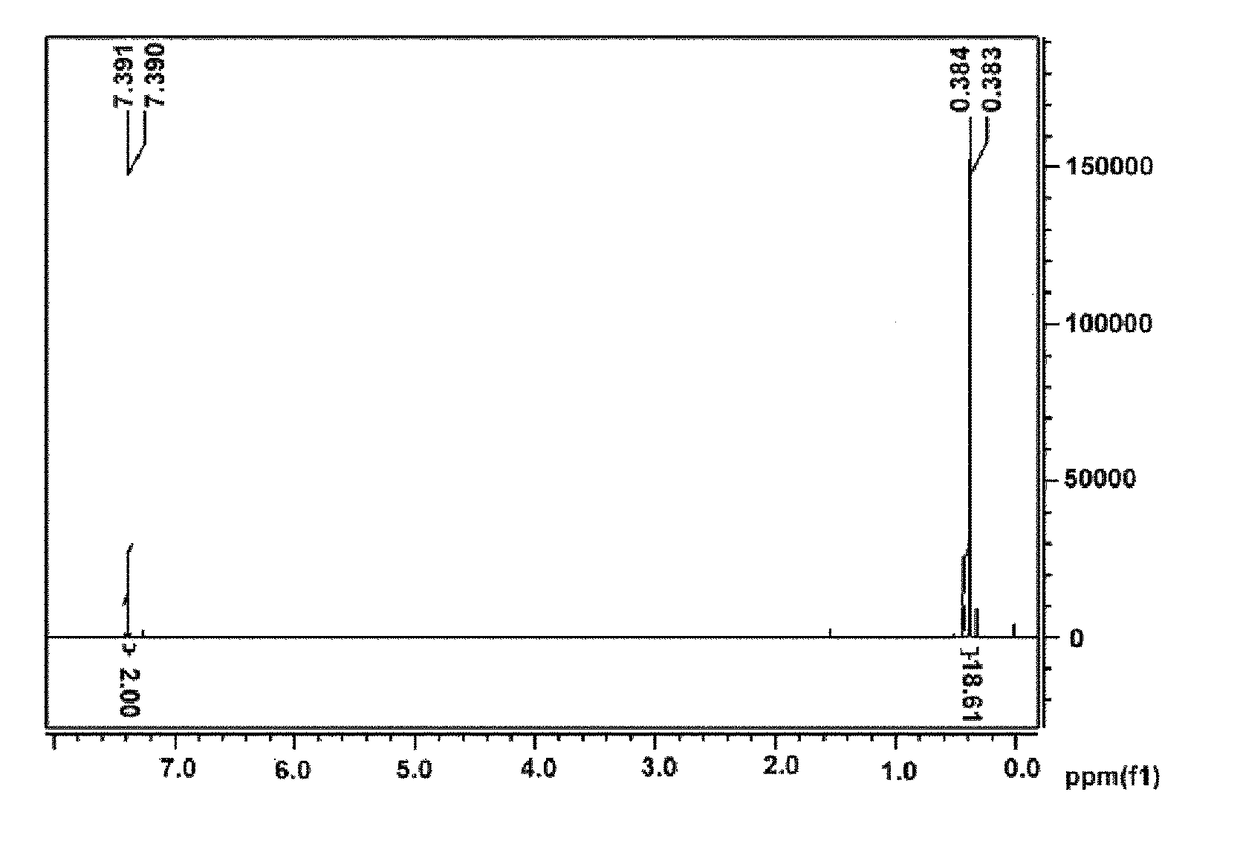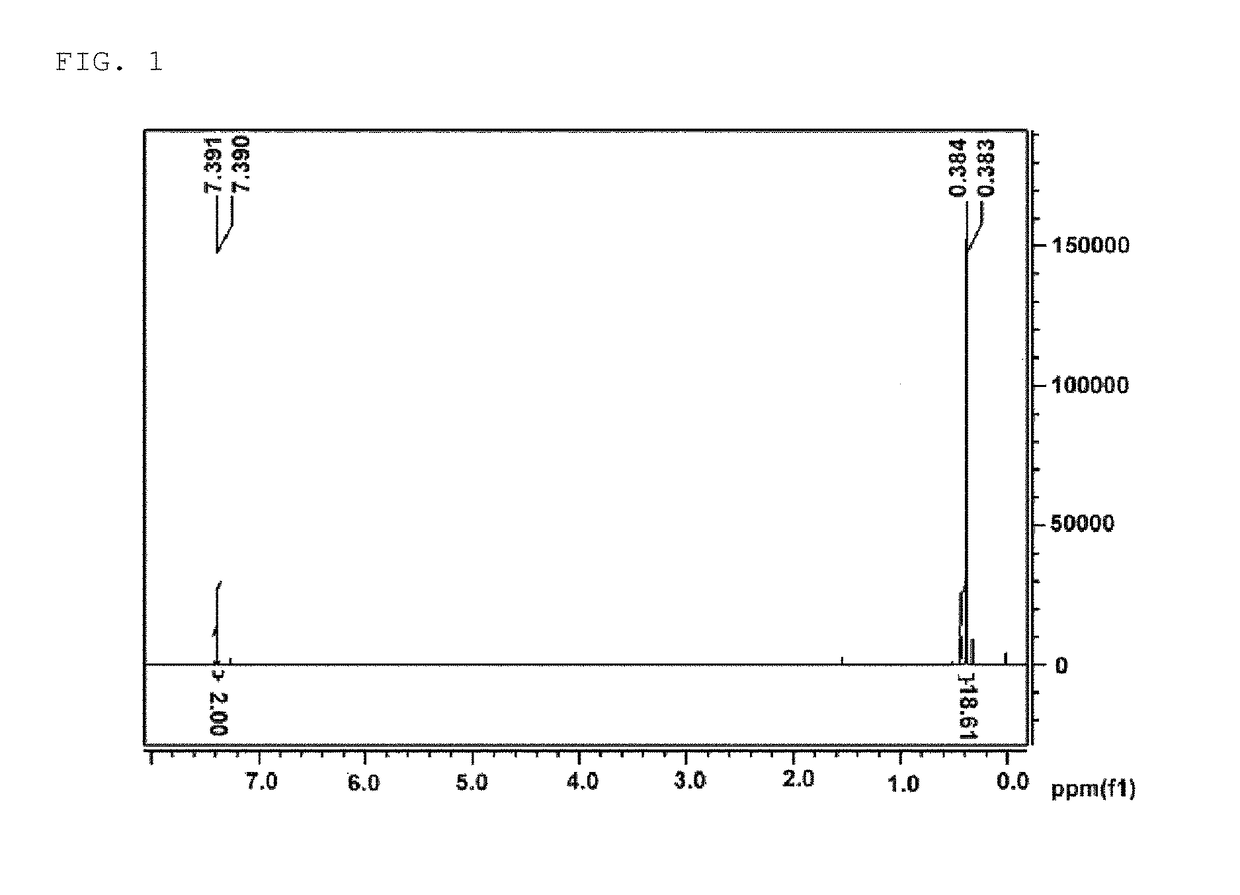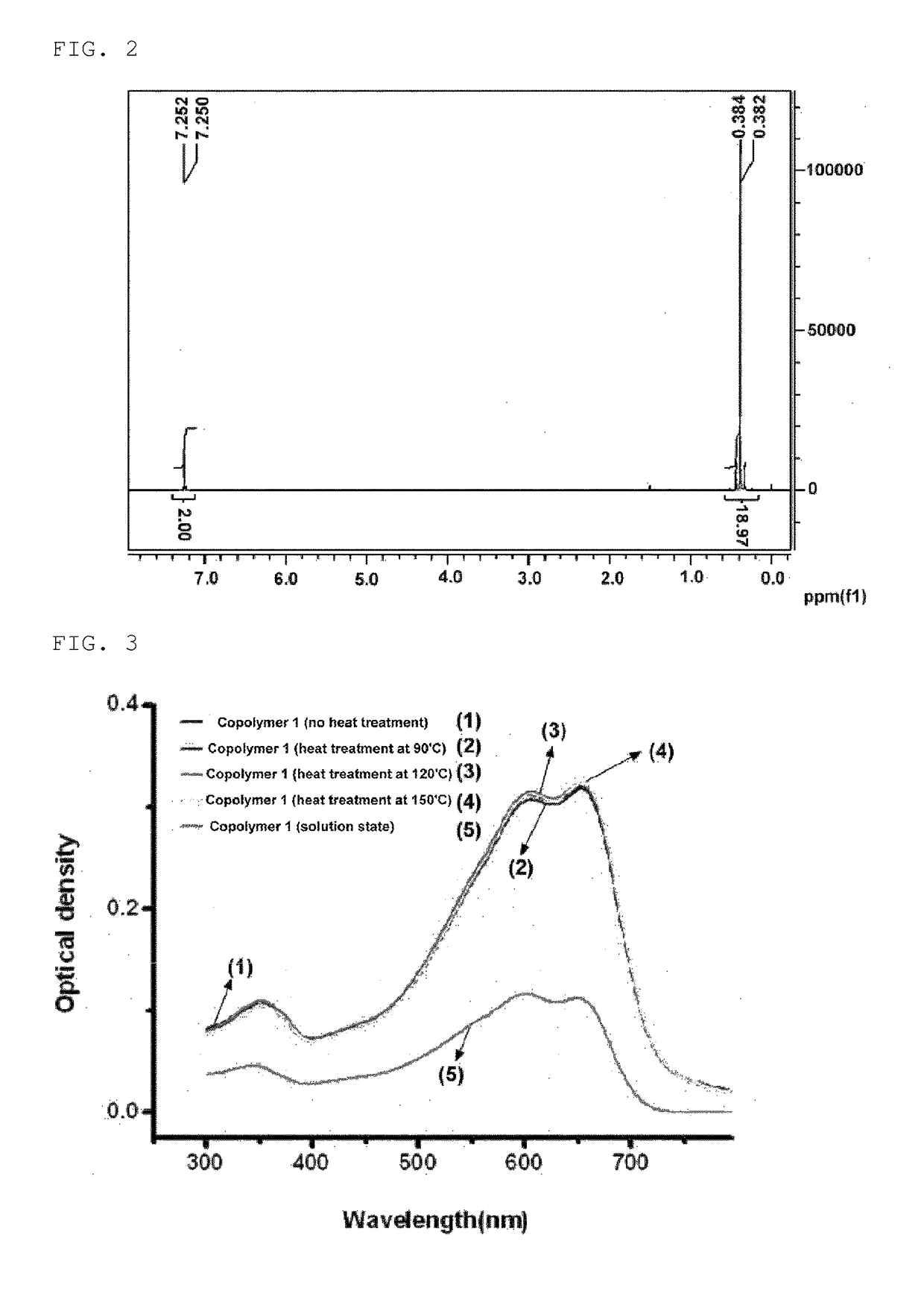Copolymer and organic solar cell using same
a solar cell and organic technology, applied in the field of organic solar cells and copolymers, can solve the problems of increasing manufacturing costs, material demands and supplies, and existing inorganic solar cells have shown the limit in economic feasibility and material demands and supplies, and achieve excellent characteristics, increase efficiency, and open circuit voltage
- Summary
- Abstract
- Description
- Claims
- Application Information
AI Technical Summary
Benefits of technology
Problems solved by technology
Method used
Image
Examples
example 1
Monomer Synthesis-1 (Synthesis of 2,5-bis(trimethylstannyl)thiophene)
[0195]
[0196]After 2,5-dibromothiophene (9.68 g, 40.0 mmol) was placed in tetrahydrofuran (200 ml) and dissolved therein, the temperature was lowered to −78° C. At this temperature, 1.6 M n-butyllithium (n-BuLi) dissolved in hexane (55 ml, 88 mmol) was slowly added thereto, and the mixture was stirred for 1 hour. After that, 1 M trimethyltinchloride dissolved in THF (100 ml, 100 mmol) was added at once thereto, the temperature was raised to room temperature, and the mixture was stirred for 12 hours. This solution was poured into ice, extracted three times with diethyl ether, then washed three times with water, and residual water was removed using magnesium sulfate (MgSO4). The solution was recrystallized with methanol after the remaining solvent was removed under vacuum, and white solids were obtained.
[0197]Yield: 73.1%
[0198]FIG. 1 is a diagram showing an NMR spectrum of the compound by Example 1.
example 2
Monomer Synthesis-2 (Synthesis of 2,5-bis-trimethylstannyl-thieno[3,2-b]thiophene)
[0199]
[0200]After thieno[3,2-b]thiophene (1.5 g, 10.7 mmol) was placed in tetrahydrofuran (50 ml) and dissolved therein, the temperature was lowered to −78° C. At this temperature, 1.6 M n-butyllithium (n-BuLi) dissolved in hexane (14.7 ml, 23.53 mmol) was slowly added thereto, and the mixture was stirred for 30 minutes. After that, the temperature was raised to 0° C., the mixture was stirred for 1 hour at that temperature, and the temperature was lowered again to −78° C. 1 M trimethyltinchloride dissolved in THF (26.7 ml, 26.7 mmol) was added at once thereto, the temperature was raised to room temperature, and the mixture was stirred for 12 hours. This solution was poured into ice, extracted three times with diethyl ether, then washed three times with water, and residual water was removed using magnesium sulfate (MgSO4). The solution was recrystallized with methanol after the remaining solvent was rem...
example 3
Polymer Polymerization (Polymerization of Copolymer 1)
[0203]
[0204]In the present specification, 4,7-dibromo-5,6-bis(octyloxy)benzo[c]-1,2,5-thiadiazole was prepared with reference to a previous literature (Wonho Lee, Hyosung Choi, Sungu Hwang, Jin Young Kim and Han Young Woo, Chem. Eur. J. 18, 2012, 2551-2558). In the present invention, 1,3-dibromo-5-dodecylthieno[3,4-c]pyrrole-4,6-dione was prepared with reference to a previous literature (Xugang Guo, Rocio Ponce Ortiz, Yan Zheng, Myung-Gil Kim, Shiming Zhang, Yan Hu, Gang Lu, Antonio Facchetti, and Tobin J. Marks, J. Am. Chem. Soc. 133, 2011, 13685-13697).
[0205]In a microwave reactor vial, chlorobenzene (15 ml), 2,5-bis(trimethylstannyl)thiophene (1.2 g, 2.93 mmol), 4,7-dibromo-5,6-bis(octyloxy)benzo[c]-1,2,5-thiadiazole (0.8059 g, 1.46 mmol), 1,3-dibromo-5-dodecylthieno[3,4-c]pyrrole-4,6-dione (0.7018 g, 1.46 mmol), tris(dibenzylideneacetone)dipalladium(0) (Pd2(dba)3, 80 mg) and tri-(o-tolyl)phosphine (107 mg) were placed, and th...
PUM
| Property | Measurement | Unit |
|---|---|---|
| molecular weight distribution | aaaaa | aaaaa |
| molecular weight distribution | aaaaa | aaaaa |
| weight ratio | aaaaa | aaaaa |
Abstract
Description
Claims
Application Information
 Login to View More
Login to View More - R&D
- Intellectual Property
- Life Sciences
- Materials
- Tech Scout
- Unparalleled Data Quality
- Higher Quality Content
- 60% Fewer Hallucinations
Browse by: Latest US Patents, China's latest patents, Technical Efficacy Thesaurus, Application Domain, Technology Topic, Popular Technical Reports.
© 2025 PatSnap. All rights reserved.Legal|Privacy policy|Modern Slavery Act Transparency Statement|Sitemap|About US| Contact US: help@patsnap.com



